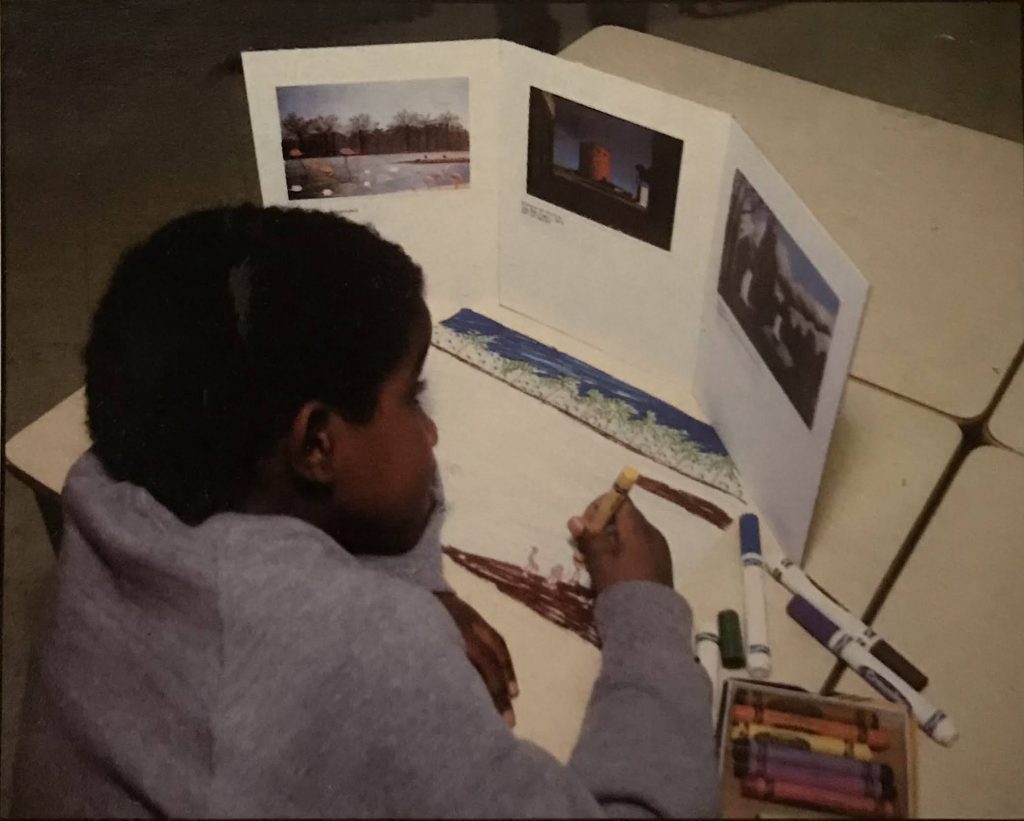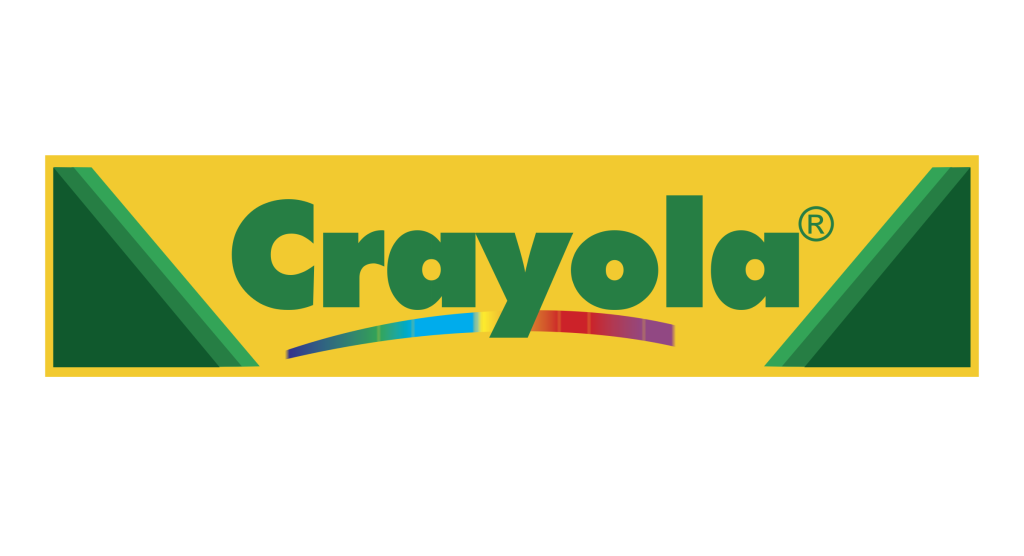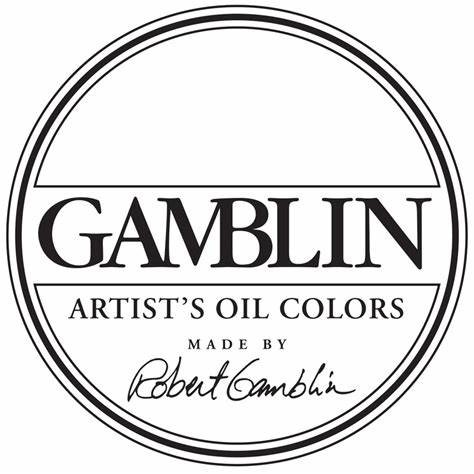
How To Draw Faces With Katie Artworks
How To Draw Faces With Katie: Unlocking the Secrets of Stunning Animal Portraits
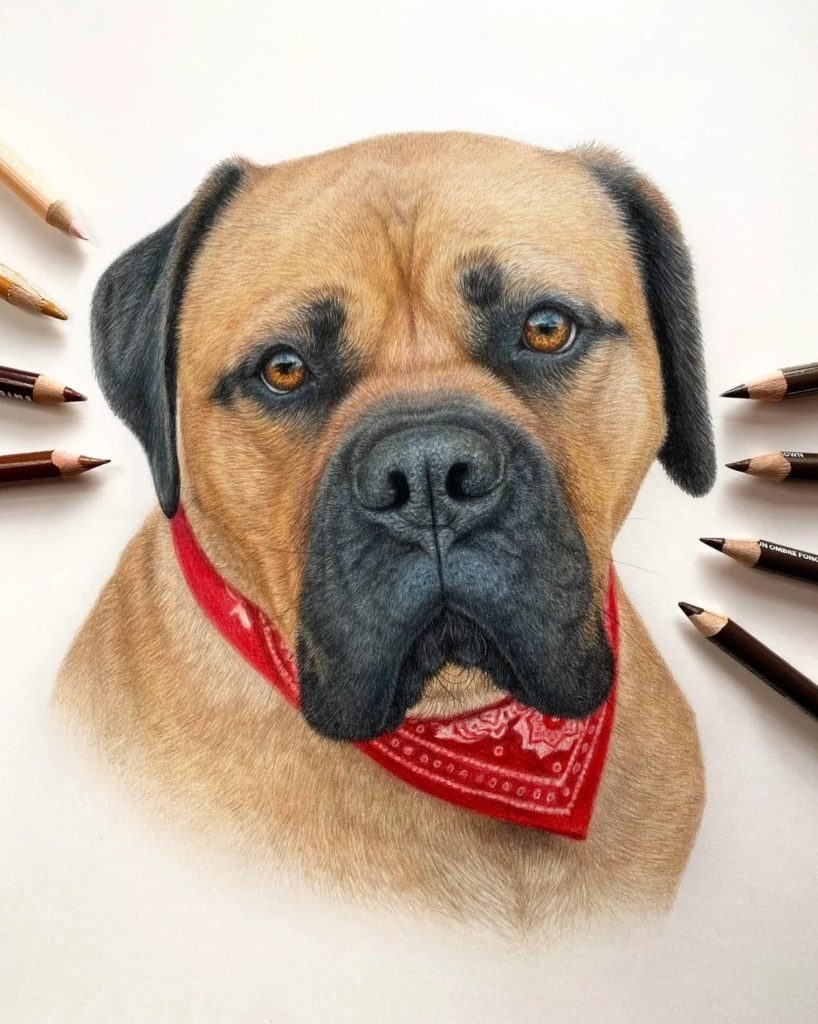
Welcome, aspiring artists, to a journey into the captivating world of portrait drawing! Whether you’ve just picked up your first set of colored pencils or refining your skills, I’m happy to inspire you. Today, we’ll be diving into the remarkable artwork of Katies Artworks. You’re about to bear witness to a talented artist whose colored pencil artwork offers insight for beginner artists. I was happy to discover her work during a regular browse through the art groups of Reddit. My goal is to explore the techniques behind her style to provide inspiration on how to draw faces of pets. I’ll also give my own experience on using colored pencils to create art in college. With that said, let’s learn how to draw faces with Katie!
How I prepare a drawing to be shipped : )
byu/KatiesArtworks inColoredPencils
Getting to Know the Artist: The World of u/KatiesArtworks
Consistently impressive, Katie demonstrates her dedication as a skilled artist of lovable furry animals. This professional animal artist proudly represents a commitment and expertise in this specific artistic niche. You can find samples of her work across various subreddits dedicated to specific animal types. This focused dedication to drawing reflects the exceptional realism she achieves in her portraits. Moreover, her artistic focus allows for repeated study and nuanced understanding of various animal features, textures, and expressions. Want to know how to draw a cat or step-by-step how to draw a dog? Studying Katie’s work offers valuable insight for the aspiring artist. Not only that, she’s a kind and generous person how responds positively to her commenters. If you’re interested in learning how to draw faces with Katie, prepare to be amazed!
Showcasing & Marketing Her Animal Art
Beyond simply sharing her artwork, u/KatiesArtworks actively engages with the Reddit community, often responding to comments and answering questions. This openness and willingness to connect with others suggest a supportive and community-oriented approach to her art. Furthermore, her level of skill and confidence has garnered market value. Over on Instagram, her presentation further suggests a multi-platform approach to showcasing their art and connecting with a wider audience. This professional aspect can serve as an inspiring example for beginners. Hence, embrace the opportunity to learn how to draw faces with Katie.
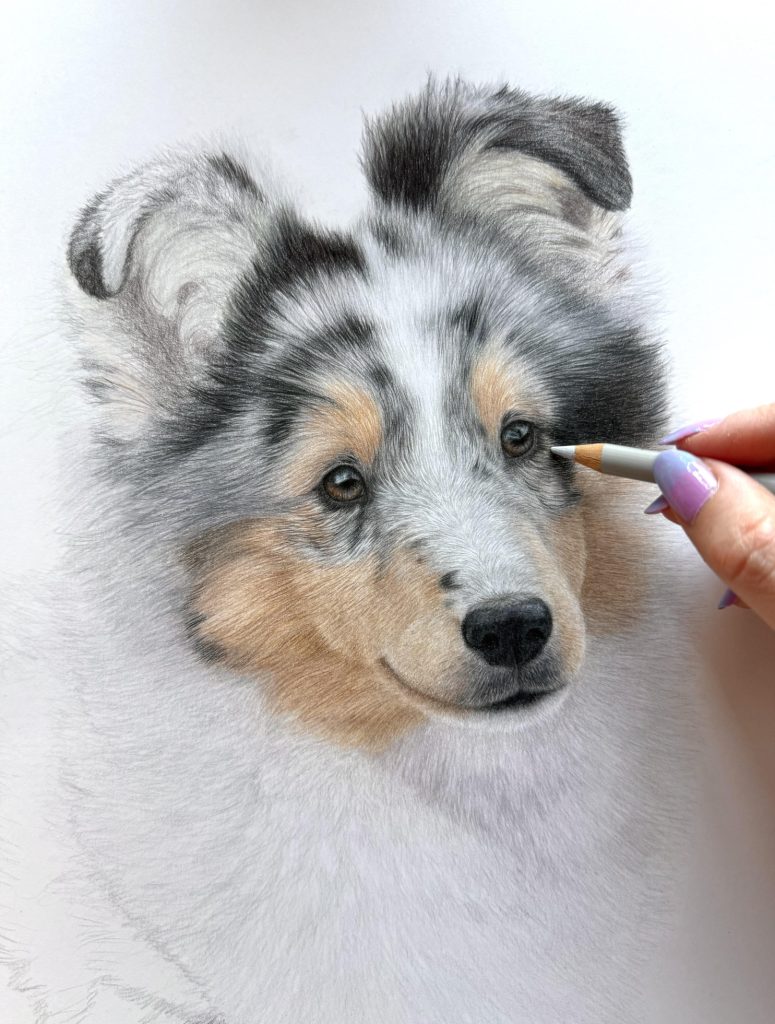
First Impressions of Katie’s Art
As a realist portrait artist, I was instantly impressed by Katie’s attention to detail and command of the colored pencil. It took me back to my days of using colored pencil as an illustration student at SVA. A recurring theme in the comments of Reddit is the astonishing level of realism achieved in their colored pencil drawings. It’s no surprise that many viewers initially mistake them for actual photographs. This immediate reaction speaks volumes about Katie’s technical skill in rendering fine details. Careful study reveals her ability to capture the subtle interplay of light and shadow, and accurately depicting various textures. As an artist, I am confident in showing how these artistic qualities can be achievable with time and practice. Furthermore, continued observation of these drawings and her process is a good way to study drawing fundamentals.
A Deeper Look Into How To Draw Faces With Katie
Numerous aspects of Katie’s work gain high praise from the spectators, and rightfully so. For instance, her “soft application of pigment” contributes to the smooth and lifelike quality of her drawings. People also highlight the ability of u/KatiesArtworks to capture the unique charm and personality of the animals she portrays. From my observation as a former colored pencil artist, it appears that she relies heavily on strokes. For instance, Katie meticulously layers strokes of color that eventually build into beautiful shades and vibrant tones. With line strokes, she’s able to replicate the details of fur accurately on each animal she portrays. Undoubtedly, learning how to draw faces with Katie is not only a lesson in creating likenesses but also practicing your linework.
Learning As a Beginner To Colored Pencil Drawing
For beginners, this approach to colored pencil demonstrates the potential that is possible through dedicated practice. It’s also worth noting that the deeply positive and often emotional responses to Katie’s animal portraits is profound. They suggest that choosing subjects with personal significance can lead to artwork that strongly resonates with viewers. Praise for her work is likely due to the inherent emotional connection people often have with animals. Furthermore, her linework, perception of edges and distinction of value are fundamental aspects of art technique to learn from. As you observe how to draw faces with Katie, she demonstrates multiple techniques. Adapt each to your artistic approach on how to use colored pencil.
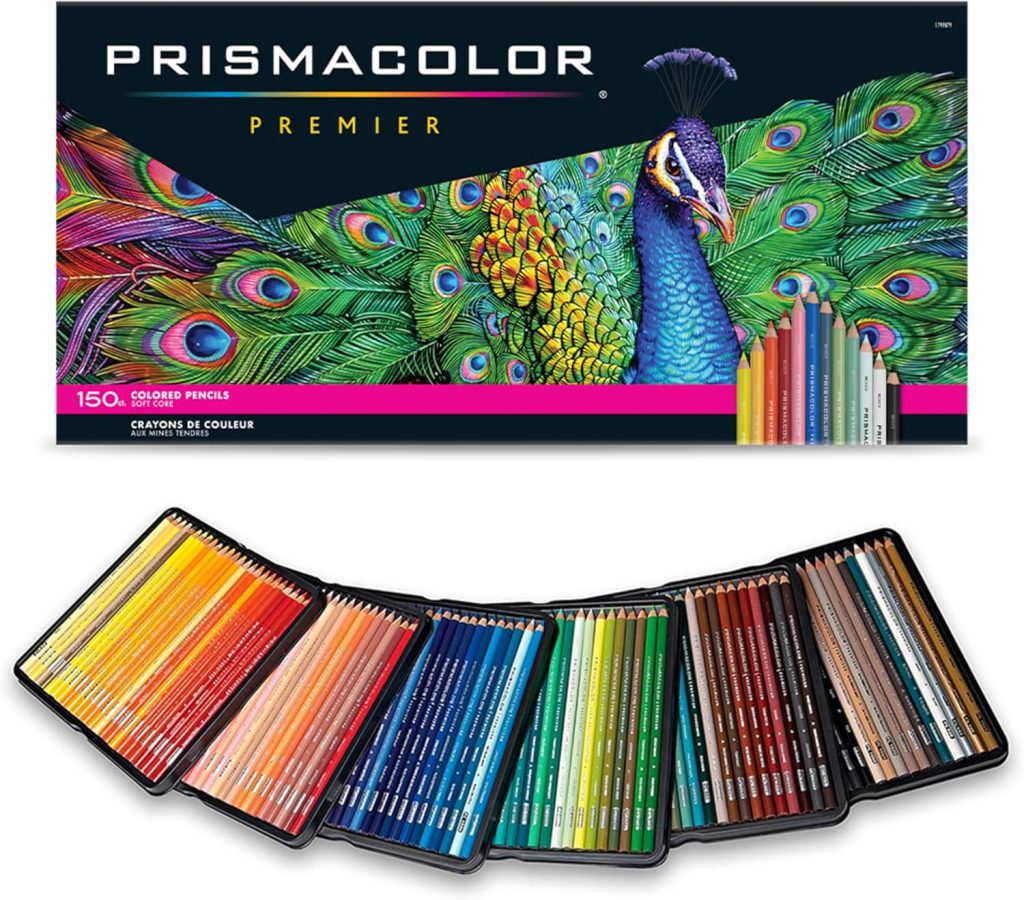
Deconstructing the Art: Portrait Drawing Techniques for Beginners
Carefully study some of the techniques that contribute to the impressive realism in u/KatiesArtworks’ animal portraits. In order to gain the best results using colored pencils, it is crucial to understand how this medium works. Most importantly, understand that these results require an in-depth working knowledge of both drawing technique and your medium. Truthfully, this is a unique medium of art allows you to find your own visual style. By learning about it’s traditional artistic application you’ll be off to a great start to learn how to draw faces with Katie.
The Foundation: Colored Pencils and Paper
The primary medium employed by u/KatiesArtworks is colored pencils. She has specifically mentioned using Prismacolor pencils. They are a popular choice among colored pencil artists known for their soft, blendable cores and wide range of colors. Prismacolor pencils are often favored for achieving smooth transitions and detailed work. In my experience with Prismacolor, I achieved smooth transitions by building multiple layers of color. Beginners might find it beneficial to start with this particular artist-grade material to facilitate their learning process. For paper, u/KatiesArtworks has mentioned using Strathmore Bristol smooth paper. This drawing paper which is known for its smooth surface, allows for fine details and an even application of color.
Importance Of Layering
Previously on Reddit, u/KatiesArtworks mentioned using a marker as a base layer underneath the colored pencil. They explained that this technique helps to build color faster, particularly in areas that are dark or highly saturated. Also noted, achieving rich saturation with colored pencils alone often requires significant layering and blending. This demonstrates her intimate understanding of how different media can be combined to achieve specific effects efficiently. Experiment with various underpainting techniques, perhaps using light washes of watercolor or diluted ink. As a result, you will discover how they influence the subsequent colored pencil layers. We begin to see that there are also layers associated with learning how to draw faces with Katie.
The Magic of Light and Shadow (Value)
A key element in creating realistic portraits is the effective use of light and shadow, also known as value. Values are beautifully portrayed in Katie’s art, resulting in commenters who frequently praise the lighting in her work. In fact, they note the “dramatic lighting” in the context of her portraiture in general. Consistent comments appear about her drawings appearing “real” or “like a photograph”. This strongly supports her mastery of creating a three-dimensional effect through skillful manipulation of light and shadow. To achieve this, beginners should focus on carefully observing the light source in their reference photos. Next, accurately render the highlights (the lightest areas), mid-tones, and shadows (the darkest areas) on your subject.
Refine Forms & Create The Illusion Of Depth
Some artists also find success in using complementary colors for shadows to add depth and realism. The success of u/KatiesArtworks in creating such convincing depth indicates a keen observation. It is the observation of how light interacts with different surfaces, such as the smooth sheen of fur. For instance, as you study how to draw faces with Katie you’ll notice her range and treatment of edges. Proper edge handling and observation in art is a way to perceive and create depth. By simplifying the structure of each portrait by Katie, we also see simple shapes used to convey form. As a beginner, practice drawing simple three-dimensional forms, like spheres and cubes. Observe these shapes under a single light source. As a result, you will understand the fundamental principles of how light and shadow define form.
Capturing the Likeness: Proportion and Accuracy
Katie consistently presents a photorealistic quality in her portraits. Time after time, her work demonstrates a strong understanding of proportion, anatomy and outstanding perception of animals. As an artist, you can achieve an accurate likeness like her with careful observation of the subject. You must also study it’s unique features and how they relate to each other spatially. For beginners, practicing drawing from reference photos is crucial. Paying close attention to key measurements and the overall proportions of the subject is essential. Some helpful techniques include using grid lines to transfer the image accurately. Simultaneously, establish basic geometric shapes to establish the foundational structure of the portrait. Be sure to employ all of these tools in your journey of learning how to draw faces with Katie.
Where Do I Begin With Proportions?
Experience in judging and drawing proportions of her subject allows Katie to create compelling and accurate portraits. For example, observe the progress of her cat face drawing above. As you can see, she began with a line drawing and gradually built-up layers of strokes. Her drawing serves as the skeleton of her shading, which eventually results in the final artwork. In addition, her skills in animal portraits suggests a solid foundation in animal anatomy. Hence, beginners interested in specializing in animal portraits would benefit from studying basic animal anatomy. Anatomy is a traditional part of artistic education which allows artists to better understand structure. Below is a great example of how to draw a cat face.
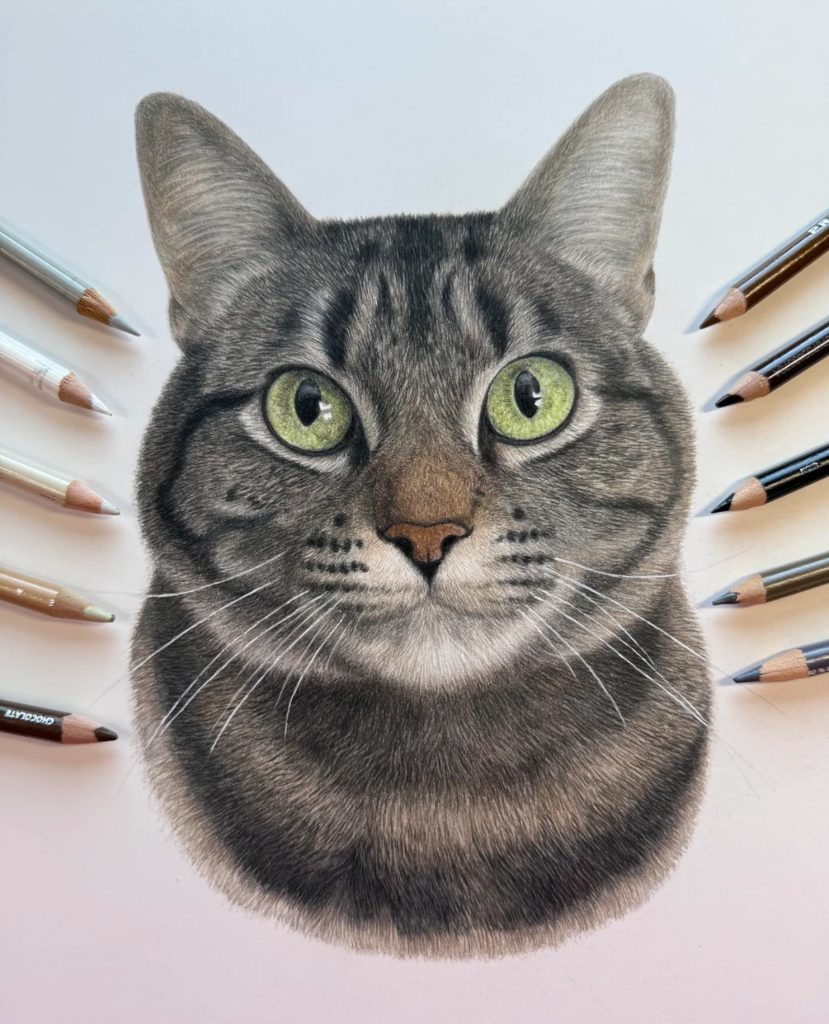
Focus on Features: Eyes, Nose, Fur, and More
The individual features within u/KatiesArtworks’ portraits are rendered with remarkable detail and contribute significantly to the overall realism. Commenters often specifically mention the “soulful eyes” in their drawings and their lifelike quality. Drawing realistic eyes involves capturing the subtle highlights that bring them to life. Eye drawing also involves depicting the variations in color and tone within the iris and pupil. Beginners can learn from Katie’s art which shows how to define the light and dark areas of the eye. For example, her work demonstrates carefully outlining its shape and layering colors to create depth and dimension. Details such as a final highlight added with white pencil or white gel pen provide a realistic sparkle. Perceiving and drawing detail is an advanced step in learning how to draw faces with Katie.
Achieving Realistic Details & Interpreting Texture
The detailed rendering of fur is another hallmark of Katie’s style, with viewers commenting on how “insanely realistic” it appears. In fact, her art is so real that her fans have expressed how they can “feel all the little hairs”. Drawing realistic fur with colored pencils like Katie involves a variety of techniques. A common piece of advice is to always stroke your pencil in the direction of the hair growth. For example, use short, flicking strokes for short fur and longer. On the contrary, use more flowing strokes for longer fur to create the illusion of texture. Layer different colors to represent the variations in the fur’s tone. Additionally, try not to draw every single hair you see as a beginner.
Experimentation For Achieving Detail
Experimenting with different pencil strokes and layering techniques will allow you to achieve various fur effects. From smooth and sleek to fluffy and textured, these textures are possible with colored pencil. Based on my experience, colored pencil offers variety depending on thin or thick you how you apply it. The type of paper you use also plays a part in how your strokes and layers will look. Beyond eyes and fur, Katie also pays close attention to other features like the texture of noses. For instance, the subtle details in ears, and the overall form of the animal contribute a lifelike quality. Focusing on each individual feature and understanding its unique characteristics are key to creating a compelling portrait.
Tools, Materials & More Techniques
As previously mentioned, Katie utilizes Prismacolor pencils and Strathmore Bristol smooth paper. The importance of keeping your pencils sharp is highly advised. I can recall the need to remain sharp, as sharp points allow for consistently drawing fine details and clean lines. Truthfully, u/KatiesArtworks doesn’t explicitly mention using blending tools. However, the smooth transitions and seamless color blends in her work suggest she uses them or employs meticulous layering. Common blending tools for colored pencils include paper stumps, tortillons, and even colorless blending pencils. Beginners can experiment with these tools to achieve smoother gradations between colors. Invest in quality artist-grade colored pencils and a good sharpener. These are fundamental steps for anyone serious about learning colored pencil drawing.
The Creative Process: Observing Sketching and Construction
Thankfully, Katie shares timelapse videos that offer inspiration and insight into her creative process. These videos offer valuable insights into her workflow, including any initial sketching or construction lines she uses. My general advice for portrait drawing: start with a light under-drawing or sketch to establish the basic proportions and composition. This foundational step is crucial before adding layers of color and detail and demonstrated in Katie’s videos. Beginners should practice sketching their subjects lightly to ensure accurate placement and proportions before committing to colored pencils.
In-Depth Techniques To Learn How To Draw With Katie
To follow in the footsteps of Katie and employ general best practices for colored pencil portraiture, try these techniques:
- Hone Your Observation Skills: The remarkable realism shown in u/KatiesArtworks’ portraits underscores the critical role of careful observation. When working from a reference photo, take the time to truly study your subject. Pay attention to the subtle shifts in light and shadow. Also, observe the nuances of color, and the textures of fur, skin, and other features.
- Embrace Layering: The smooth transitions and rich colors in her drawings are a testament to the power of layering. Practice applying light layers of color, gradually building up the depth and intensity you desire. Remember that with colored pencils in particular, it’s much easier to add more color than to remove it.
- Master Fur Direction: For animal portraits, always pay close attention to the direction in which the fur grows. Use short, flicking strokes for areas of short fur and longer, more flowing strokes for longer fur. Overlapping these strokes will help create a more natural and less uniform appearance.
- Start with Simple Shapes: When beginning a portrait, try breaking down your subject into basic geometric shapes. This will help you establish the correct proportions and overall structure before you start adding details.
- Practice Individual Features: Dedicate practice time to drawing individual features like eyes, noses, and ears. Focus on capturing the specific details and understanding how light and shadow interact with these forms. This is how a three-dimensional quality is achieved.
- Experiment with Underpainting: Consider trying a light underpainting technique using markers or watercolors. Light layers of colored pencil in a similar or complementary color to your final layers also works. See how this affects the overall look and efficiency of your coloring process.
Artist’s Corner: Advice and Insights On How To Draw With Katie
A study of Katie’s path offers valuable insights into the artistic process. It is an example of a consistent effort which results in a professional artist:
- u/KatiesArtworks mentioned a current artwork taking over 15 hours. This highlights the significant time and dedication that goes into creating detailed colored pencil portraits. Beginners should understand that achieving high-quality results often requires patience and perseverance.
- When asked how she learned to draw so well, Katie’s simple reply of “years of practice” reinforces a fundamental truth. Truthfully, her consistent practice is the most crucial element in improving any artistic skill.
- Active engagement with commenters on her posts suggests the value of being part of an artistic community. Equally, sharing your work, and being open to feedback and interaction with other artists is helpful. Beginners can benefit greatly from connecting with fellow artists for support and encouragement.
- By sharing their commission rates, u/KatiesArtworks provides a glimpse into the potential for turning artistic skills into a professional endeavor. This can be motivating for beginners as they progress on their artistic journey.
Conclusion: Your Journey into Portrait Art
The artwork of u/KatiesArtworks serves as a beautiful and inspiring example to artists. This is what can be achieved with dedication and skill toward colored pencil portraiture. Whenever you need inspiration, just visit Reddit (and/or this blog post). By reading, you will gain valuable insights into the key elements of creating realistic and engaging animal portraits. Remember that the journey of learning art is a marathon, not a sprint. Embrace the process of observation, experimentation, and consistent practice. Just like Katie, with time and dedication, you too can unlock the secrets to creating stunning portraits. For ongoing inspiration, follow u/KatiesArtworks on Reddit and her Instagram account.
Table 1: Beginner-Friendly Colored Pencil Techniques Inspired by u/KatiesArtworks
| Technique | Description | Why it Matters (Connection to u/KatiesArtworks’ Style) | Beginner Tips for Practice |
| Careful Observation | Paying close attention to details in your reference photo. | Essential for capturing the realism and unique characteristics seen in their photorealistic portraits. | Spend time studying your reference image before drawing. Note the nuances of light, shadow, color, and texture. |
| Light Layering | Applying thin, translucent layers of colored pencil. | Crucial for achieving the smooth color transitions and rich depth evident in their work. | Start with light pressure and gradually build up color intensity with multiple layers. |
| Fur Stroke Direction | Using strokes that follow the natural growth of the animal’s fur. | Key to creating the realistic texture and flow of fur in their animal portraits. | Observe the direction of fur in your reference. Use short, flicking strokes for short fur and longer, flowing strokes for long fur. |
| Basic Shapes First | Starting your drawing by outlining the subject with simple geometric forms. | Helps establish accurate proportions and overall structure, which is fundamental to their realistic depictions. | Before adding details, lightly sketch the basic shapes (circles, ovals, rectangles) that make up your subject. |
| Feature Focus | Dedicating practice to drawing individual elements like eyes, nose, and ears. | Allows for detailed rendering of key features, contributing to the overall lifelike quality of their portraits. | Choose a specific feature (e.g., an eye) and practice drawing it repeatedly, focusing on capturing the details of light, shadow, and color. |
| Underpainting Experiment | Applying a base layer of color with another medium (e.g., marker) or light pencil. | Potentially used by the artist to build color quickly, especially in dark or saturated areas. | Try a light wash of a similar or complementary color to your subject before layering with colored pencils. Observe how it affects the final colors and depth. |
| Sharp Pencils | Ensuring your colored pencils are always well-sharpened. | Essential for achieving fine details and clean lines, which are hallmarks of their detailed style. | Invest in a good quality pencil sharpener and make a habit of sharpening your pencils frequently. |
| Patience & Practice | Understanding that improvement takes time and consistent effort. | Reflected in the artist’s own statement about “years of practice” and the time invested in each piece. | Be patient with your progress and practice regularly. Don’t be afraid to make mistakes – they are part of the learning process. Celebrate your improvements, no matter how small. |
